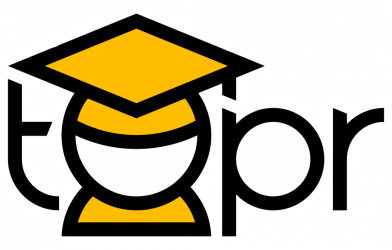Description Students want to know what will be on the test. But faculty want students to focus on authentic learning rather than simply scoring well. Our strategy addresses both desires. Good course design involves alignment of course and lesson objectives with relevant activities and assessments. It is imperative that students be provided with this “roadmap” …
Continue reading “Encourage Metacognitive Learning by Visualizing Objectives”
Related Tags:
Academic Integrity,
Alignment,
Cognitive Theory,
Connectivism,
Content,
Discussions,
Formative,
Learning Activities,
Learning Objective,
Learning Presence,
Metacognition,
Peer Learning,
Scaffolding,
Social Presence,
Visual
Description Today’s technological environment requires practical skills in online competencies; one of these skills is webinar facilitation. Facilitation is a useful skill to support group in meeting an objective, making a decision, or collaborating more effectively. Facilitation is also the teaching strategy that can be selected for assignments in order to: (1) model for students …
Continue reading “Preparing Students to Facilitate a Webinar”
Related Tags:
Active Learning,
Adult Learning,
Bloom's Taxonomy,
Content,
Engagement,
Facilitation,
Interaction,
Peer Review,
Web Conferencing
Description Student self-regulation, or the ability of students to self-direct and monitor their learning behaviors, has been shown to be a viable predictor for significant learning (Shea & Bidjerano, 2012) and accounts for significant portions of the variance in learning outcomes (Wertz, 2014). Scaffolding student self-regulation has been shown to impact self-regulation of online interactions …
Continue reading “Scaffold Student Success in Online Learning through Metacognitive Prompting and Reflective Journaling”
Related Tags:
Content,
Learning Object,
Metacognition,
Reflection,
Scaffolding,
Self-Regulation,
Student Success
Description The global movement of utilizing Open Educational Resources (OER) to enhance or build course content is rapidly growing amongst educators (Hilton, Wiley, Stein, & Johnson, 2010). Faculty are using OER to provide access to educational materials at little to no cost, allowing for up-to-date, relevant and accessible content to students. Hylén (2006) defines OER …
Continue reading “Implement Open Educational Resources”
Related Tags:
Content,
Ebook,
OER
Description PowerPoint Presentations are often a staple of face-to-face classes. With the move to online courses, PowerPoints, originally used to accompany face-to-face lectures, were uploaded to online content. However, without the accompanying lectures, they are generally of little value to students. In order to ameliorate this problem, audio narrations were added as a supplement. However, …
Continue reading “Create Accessible Narrated PowerPoint for Content Delivery Online”
Related Tags:
Accessibility,
Content,
Powerpoint
Description Similar to the six-word story from the flash fiction genre, the Six-Word Memoir is a writing genre for telling a personal story in six-words. In popular culture, it has become a global movement now featured in the book Not Quite What I Was Planning: Six-Word Memoirs: by Writers Famous and Obscure, on [in the …
Continue reading “Assign Six Word Memoirs for Reflection and Synthesis”
Related Tags:
Assessment,
Content,
Digital Storytelling,
Interaction,
Memoir,
Mobile,
Reflection,
Six-Word Memoir,
Synthesis,
Text Message
Description Screencasting refers to as a digitally recorded playback of computer screen output which often contains audio narration (Udell, 2005). Faculty choose to use them to record portions of lectures to provide overview, describe procedures, present concepts, focus attention and elaborate content (Sugar, Brown & Luterbach, 2010). Here are a few examples of instructional uses …
Continue reading “Create Screencasts to Present Content and Focus Attention”
Related Tags:
Content,
Instructor Presence,
Jing,
Powerpoint,
Problem-Based Learning,
Screencast,
Video
Description Numerous studies have found that students who use simulations to learn concepts then subsequently demonstrate higher test scores than students using traditional lecture and discussions to cover the same material. Thus, the research indicates that online students could benefit from properly designed simulations (Porter, 2004). Individual instructors have two basic choices for obtaining simulations: …
Continue reading “Use Excel-based Simulations to Improve Online Student Understanding of Deterministic Financial Models”
Related Tags:
Cognitive Theory,
Content,
Excel,
Experiential Learning,
Optimization,
Simulation
Description In a classroom setting, levels of student engagement vary widely, but instructors can adjust the lesson based on the perceived level of student engagement. However, in an online environment, instructors cannot spontaneously prompt students to motivate their engagement. When developing asynchronous modules, using a motivational design model and appropriate technologies allows one to replicate …
Continue reading “Apply Motivational Design Principles to Create Engaging Online Modules”
Related Tags:
Content,
Engagement,
Interaction,
Library,
Module,
Motivational Design,
Scaffolding,
Tutorial
Description One of the major goals of higher education is to cultivate students’ critical thinking skills (Roth, 2010). In order to be prepared for the workplace and to be an informed citizen, students need to be able to base judgments, make decisions, and solve problems based on the careful critique of available evidence. Engagement, defined …
Continue reading “Use Word Clouds to Enhance Critical Thinking”
Related Tags:
Assessment,
Content,
Critical Thinking,
Discussions,
Engagement,
Interaction,
Word Cloud,
Wordle

